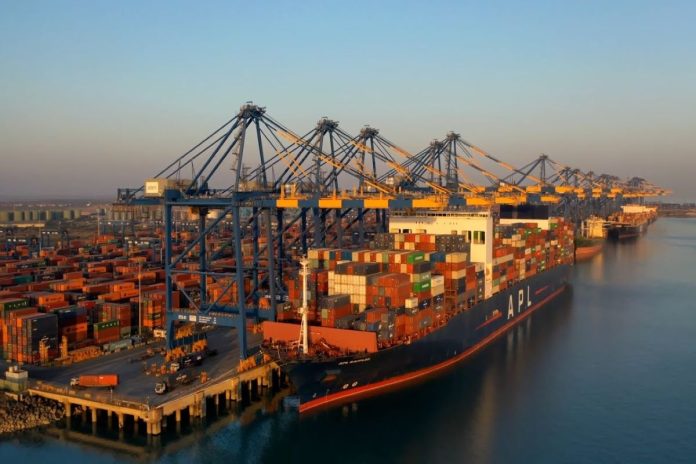V O Chidambaranar Port in Tamil Nadu, formerly known as Tuticorin Port, has made remarkable strides in the maritime industry.
V O Chidambaranar Port Authority (VOCPA) is one of the 12 major ports in India and the second largest port in Tamil Nadu. The VOCPA was declared a major port by the government of India in July 1974.
VOPCA is working on a project worth Rs 7,200 crore to make VOC Port a transhipment hub that can compete with Colombo and Singapore.
The project majorly involves the construction of a breakwater, the creation of a backup yard, berth/jetty construction, mechanisation in the berth and stackyard, railway line laying, navigational aids, capital dredging in the outer harbour basin and approach channel, construction of rubble bund for reclamation of dredged materials, etc.
The port has a handling capacity of around 70 million tonnes per annum (MTPA) with 16 berths, including two container berths.
The port handles major cargoes such as coal, copper concentrate, timber logs, phosphoric acid, rock phosphate, granite stone, salt, wheat sugar, construction materials, pulses, VCM, LPG naphtha, furnace oil, ammonia fertiliser, etc.
Significance Of VOC Port
Strategic Location And Geographic Advantage: Colombo and Singapore are revered for their strategic positioning, acting as gateways between major shipping routes. Colombo serves as a pivotal link between Asia and Europe, while Singapore connects Asia to the rest of the world.
VOC Port’s strategic positioning close to the East-West International Sea Route is a pivotal asset. Situated at latitude 8° 45’N and longitude 78° 13’E, it holds a key geographic advantage, offering an ideal location for ships traversing this critical trade route.
It can serve as an alternative or complement to these hubs, offering shorter routes for certain trades and easing congestion in the region.
Moreover, VOC Port is well-sheltered from the fury of storms and cyclonic winds, making it a safe and reliable choice for shipping lines.
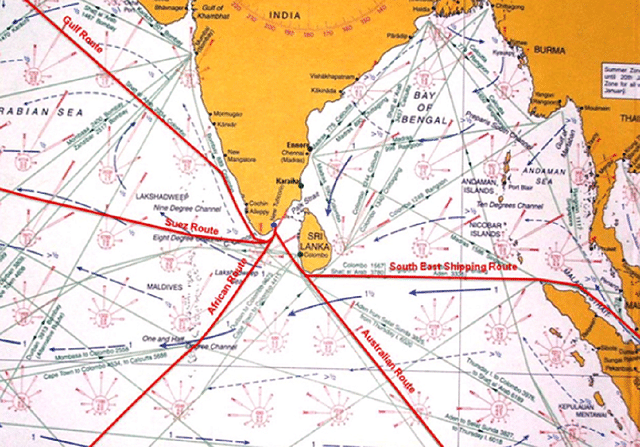
V O Chidambaranar Port is an artificial deep-sea harbour formed with rubble mound type parallel breakwaters projecting into the sea for about 4 km. (Length of north breakwater is 4,098.66 m, length of south breakwater is 3,873.37 m and the distance between the breakwaters is 1,275m).
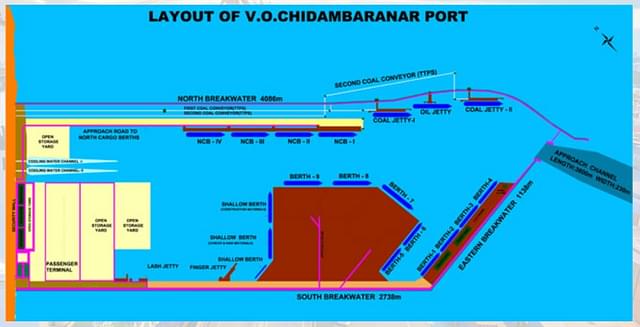
Connectivity: The port is exceptionally well-connected by a comprehensive network of broad-gauge rail and road infrastructure to major cities and inland container depots (ICDs) across India.
This connectivity ensures the efficient transportation of cargo to and from the port, significantly enhancing its attractiveness for traders, manufacturers and shipping lines.
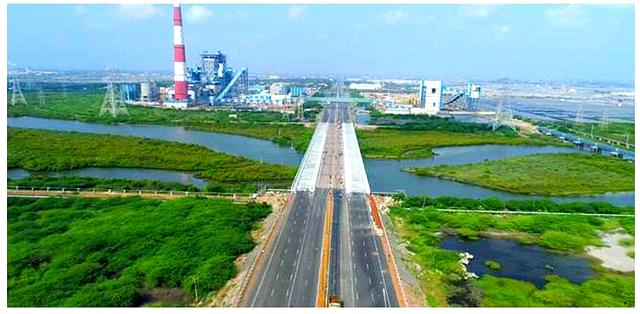
Consistent Growth In Container Traffic: V O Chidambaranar Port’s potential to become a global transshipment hub stems from its consistent growth in container traffic. The port has recorded consistent growth in container traffic in recent years.
In the last few years, 2017-18, 2018-19, 2019-20 and 2020-21, VOCPA handled container traffic of 6.92 lakhs TEUs, 7.39 lakhs TEUs, 8.04 lakhs TEUs and 7.62 lakhs TEU, respectively.
During the year 2022 – 2023, the port handled 38.04 MT cargoes.
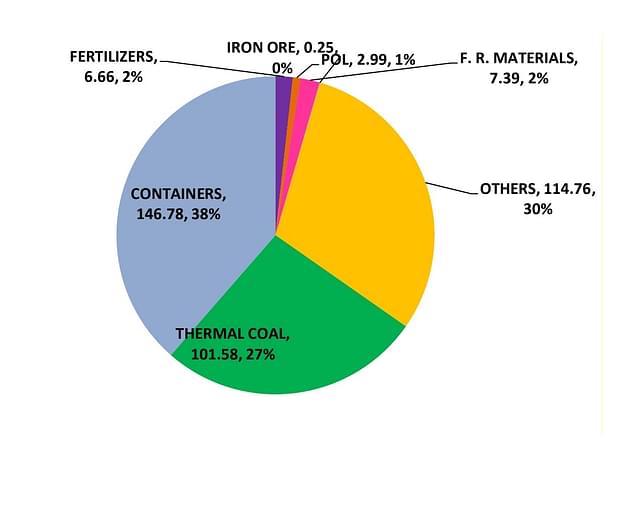
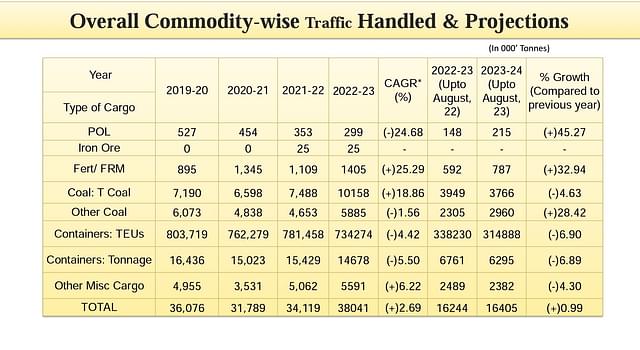
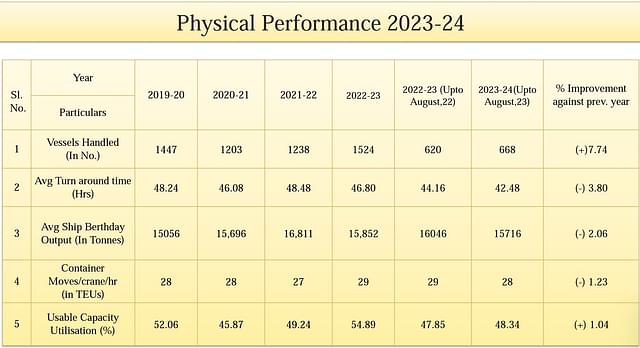
Modern Infrastructure: V O Chidambaranar Port boasts two container terminals, operated by globally recognised companies, equipped with state-of-the-art technology and modern handling equipment.
These world-class facilities include mechanised berths, conveyor systems, and harbor mobile crane facilities, ensuring swift and efficient cargo operations.
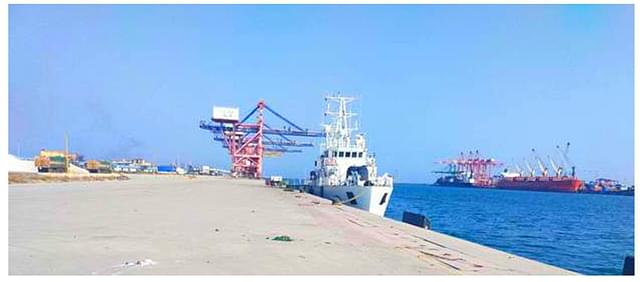
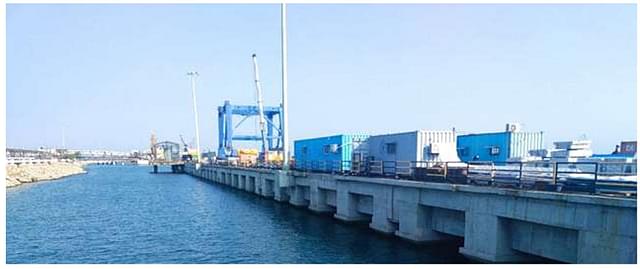
Deep Draft: One of the port’s distinctive features is its deep draft, with depths reaching up to 14.2 metres. This capability allows the port to accommodate larger vessels, making it an attractive option for container ships and transshipment activities. The ability to handle larger vessels is often a critical factor in a port’s competitiveness.
Quality Management: VOC Port Authority has a history of adhering to international standards of infrastructure and operation.
Notably, it was the first major port in India to implement a quality management system based on ISO standards when the concept was new to the port sector.
The quality management system, followed since 1996, has significantly improved the port’s operations and customer satisfaction.
Green Port Initiatives: V O Chidambaranar Port is dedicated to sustainability and has made significant investments in green energy initiatives to become ‘integrated green energy port’.
These include the installation of rooftop solar power plants, the replacement of conventional lighting with energy-efficient LED lights throughout the port area, and other eco-friendly practices.
These initiatives align with global efforts to reduce carbon emissions and support India’s pledge to reduce greenhouse gas emissions as part of its climate action goals.

India’s Hydrogen Hub
The VOC Port is making history by becoming the first port in India to handle green ammonia.
The import of green ammonia at VOC Port is a crucial step towards reducing the carbon footprint of shipping and transportation in the region.
It aligns with the global shift towards sustainable energy sources and supports India’s pledge to reduce greenhouse gas emissions as part of its climate action goals.
The handling of green ammonia is not only a milestone for VOC Port but also a giant leap towards a cleaner and more sustainable world.
VOC Port is embarking on a project to create a green hydrogen ecosystem for industries and establish itself as India’s hub for exporting and bunkering green hydrogen.
Competing With Colombo And Singapore?
V O Chidambaranar Port’s strategic location, modern infrastructure, commitment to quality and sustainability, and ongoing projects make it a formidable competitor for established transshipment hubs like Colombo and Singapore.
V O Chidambaranar Port’s initiatives related to green ammonia and green hydrogen also position it as a forward-thinking and environmentally conscious port.
These projects align with global efforts to reduce emissions in the shipping industry and contribute to India’s climate action goals.
However, there are several critical areas that VOPCA should prioritise in its efforts to position VOC Port as a viable alternative to the transshipment hubs of Singapore and Colombo.
Way Forward
Colombo and Singapore have invested heavily in state-of-the-art infrastructure. Colombo’s Port City development and Singapore’s Tuas Mega Port are massive undertakings that position these hubs as forward-looking and equipped for the future.
VOC Port, although demonstrating commitment to modernisation, needs to match or surpass these infrastructure developments to be a strong contender. Ongoing and upcoming projects must be executed efficiently to keep pace with the competition.
Colombo and Singapore have established extensive networks, serving as vital links in global supply chains. VOC Port’s advantage lies in its strong connectivity to India’s hinterland, but it must further enhance its multimodal transportation links, enabling efficient cargo movement to and from the port.
Colombo and Singapore have established strong international ties and partnerships. VOC Port should actively seek collaborations with major shipping lines, exporters, and importers.
Furthermore, diversifying its market presence, capturing a wider range of cargo types, and attracting global transshipment business will be essential to compete on a global scale.
In conclusion, while VOC Port’s potential to compete with Colombo and Singapore is evident, it faces formidable challenges. It must continue its current trajectory of infrastructure development, operational excellence, sustainability, and government support.
Proactive engagement with the global shipping community and a strategic vision for the future are essential to becoming a significant player in the global transshipment arena.
The transformation of VOC Port into a serious contender will contribute not only to its regional and national economy but also to India’s emergence as a crucial player in the global maritime trade network.


